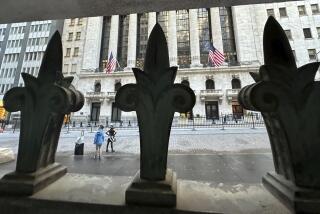Congress funds mortgage fraud crackdown
It may not have made a big splash on network news or in print, but for real estate it was the equivalent of a congressional declaration of war against mortgage fraud.
Just as security and intelligence agencies were given huge funding boosts by Congress after 9/11, the FBI, the Justice Department, the Secret Service and the U.S. Postal Service have just gotten a combined $500 million in new funding authority to investigate and prosecute individuals and companies who engage in mortgage fraud. President Obama signed the legislation May 20.
The targets range from people who lie about their incomes on home mortgage applications to highly organized roving networks of “foreclosure relief” scammers who bilk money out of homeowners seeking mortgage modifications.
Known as the Fraud Enforcement and Recovery Act of 2009, the legislation will fund new SWAT teams of fraud-busters and broaden federal legal powers to go after individuals and mortgage operations that currently get attention -- if at all -- only at the state or local levels.
The law also creates a Financial Crisis Inquiry Commission with broad powers to investigate who and what got us into the real estate mess, starting with the subprime boom, Wall Street hanky- panky and more recent bank failures.
How bad is mortgage fraud? The Treasury Department estimates it causes losses to consumers and the mortgage industry of anywhere from $15 billion to $25 billion a year. FBI Director Robert S. Mueller III told Congress his agency’s mortgage fraud caseload has tripled in the last three years.
Reports of potential fraud filed with the Financial Crimes Enforcement Network exceeded 65,000 in 2008 -- up from about 25,000 in 2005 and just 5,400 in 2002. Officials say the recession and the end of the housing boom have actually stimulated more fraud rather than the reverse.
What do these frauds look like and where are they occurring? The Mortgage Asset Research Institute performs an annual study of the problem for the Mortgage Bankers Assn., and its 2009 report found:
* Roughly two-thirds of all frauds involve deceptions at the application stage. For example, some borrowers tell the lender they plan to occupy and use the property as their main residence, but they really plan to turn it into a rental unit. That ruse often gets the applicant a lower rate on the loan, but it’s a violation of federal law.
* About 28% of frauds last year involved deliberate misinformation about tax returns or financial statements. Fake IRS filings can be created with readily available software programs, and documentation of financial assets can be manipulated as well. Around 21% of fraudulent applications contained faked deposit verifications last year.
Some operations even go so far as “renting” bank deposits to loan applicants who need to bolster their financial profile. For a fee of $1,000 and up, you can become the “owner” -- at least on paper, for a short period of time -- of an actual bank account controlled by the asset rental company.
The lender receives a verification of a deposit in your name, but has no idea you’re only renting the bank account to hoodwink underwriters.
* Appraisal shenanigans rank high as well and were involved in about 22% of fraud cases in 2008. Appraisal fraud -- typically inflated valuations intended to squeeze more mortgage money out of the lender -- may well be more commonplace than the official statistics. That’s because many overvaluations are modest enough to avoid detection, but large enough to get the loan closed, thereby increasing subsequent risk of loss to the lender.
* Other widespread forms of home loan fraud include faked employment verifications, misinformation on closing or escrow documents, and credit reports or scores that have been manipulated in some way to get unqualified borrowers approved, or lower interest rates, or both.
According to the 2009 report from the mortgage researchers, the top 10 states where disproportionate numbers of frauds occur are spread from coast to coast. The No. 1 state for mortgage frauds last year was tiny Rhode Island. Next came Florida, Illinois, Georgia, Maryland, New York, Michigan, California, Missouri and Colorado.
Maryland had the highest percentage of frauds involving bogus tax returns. In California, nearly 40% of fraudulent applications carried incorrect verifications of deposits or bank statements.
With the federal agencies gearing up new prosecution teams devoted solely to detecting and fighting mortgage fraud, scammers should be on notice: Now more than ever, you’re likely to end up before a grand jury, receive a big fine or do prison time.






